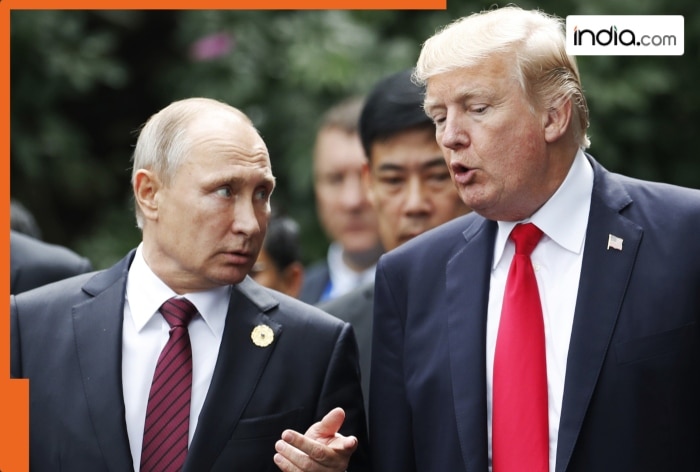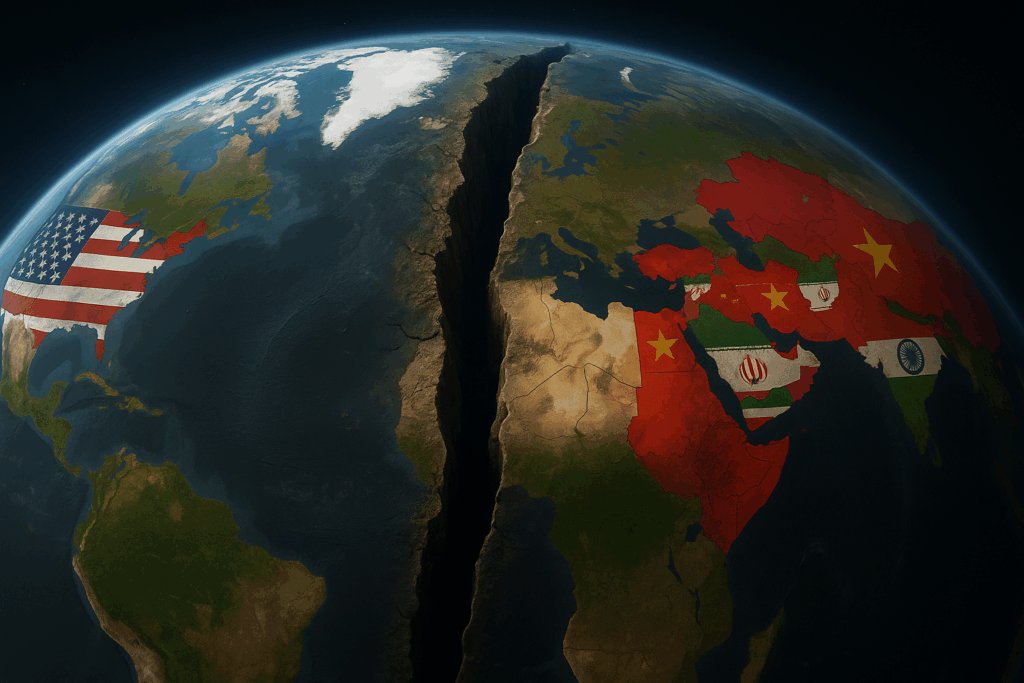Russia’s secret operation involved hacking emails and documents and spreading false information on social media.
New Delhi: George Papadopoulos, who was a foreign policy adviser for Donald Trump’s presidential campaign, shared with Australian diplomat Alexander Downer that Russia had harmful information about Trump’s political opponent, Hillary Clinton, according to reports from the investigative outlet The Intercept.
That conversation, which took place in a London bar, eventually set off the Trump-Russia investigation. This was a large counterintelligence and criminal investigation into Russia’s efforts to interfere in the 2016 U.S. presidential election to support Trump’s victory.
Russia’s secret operation involved hacking emails and documents from Clinton’s campaign and the Democratic Party. They also spread false information about Clinton on social media.
The Russians made serious efforts to help Trump win the election, and both Trump and his campaign were aware of this and accepted the assistance. In a well-known moment during a 2016 campaign event, Trump even openly asked Russia to offer more help.
Today, U.S. intelligence agencies believe that Russia is once again interested in helping Trump win the 2024 election. This makes it crucial for Americans to fully understand the truth about the Trump-Russia case and the risky connection between Trump and Russia’s leader, Vladimir Putin.
The truth about the Trump-Russia case is detailed in multiple government investigations and court cases. Together, they reveal that Russian intelligence, under Putin’s direction, carried out a cyberattack against American democracy.
They also reveal that Trump eagerly accepted Russia’s help, a country where he had earlier tried to secure big business deals and financial backing.
During the 2016 campaign, Trump brought on a campaign manager who had previously worked for a Ukrainian politician aligned with Putin. This manager also had close connections with a Russian intelligence agent and shared private details about the Trump campaign with him.
Since the Trump-Russia investigation started, it has become clear what Putin was trying to achieve by interfering in U.S. elections to support Trump.
Putin is focused on rebuilding a Russian empire, similar to the size and influence of the Soviet Union and its control over Eastern Europe during the Cold War.
Since gaining power in Moscow in the early 2000s, Putin has been steadily pursuing his goal of rebuilding a Russian empire. He has weakened efforts to establish democracy in Belarus, helping put a pro-Russian dictator in place, and has been working for years to achieve similar control in Georgia.
His current focus is Ukraine, a democratic nation that wants to become a member of both the European Union and NATO.
In 2014, Putin shocked the West by quickly taking control of Crimea from Ukraine, and in 2022, he launched a full invasion of Ukraine. This violent war has already led to the loss of hundreds of thousands of lives.
Putin has never accepted Russia’s loss in the Cold War, and his goal is to restore Russia as a major superpower once again.
This means that taking back former Soviet republics like Belarus, Georgia, and Ukraine is only the first step in his larger plan.
Putin also aims to take back control of the Baltic states—Lithuania, Latvia, and Estonia—that were once part of the Soviet Union. In the long run, he hopes to extend Russia’s influence over the former Eastern European countries of the Warsaw Pact, including Poland, Hungary, Bulgaria, Romania, Albania, the Czech Republic, and Slovakia.
The Warsaw Pact was a military alliance formed during the Cold War between the Soviet Union and several Eastern European countries, created to counter the U.S.-led NATO alliance in the West.
If Putin remains in power long enough, he might even aim for a bigger goal: reclaiming the part of Germany that used to be East Germany.
That might seem unlikely, but it’s only been 35 years since the Berlin Wall came down. At that time, Putin was a young KGB officer in East Germany, witnessing the collapse of the Soviet empire.
For Putin to achieve his goals, he needs to ensure that the United States doesn’t interfere with his plans to rebuild the Russian empire. That’s why Putin has supported Trump, who has caused political chaos in the U.S., opposes American involvement in NATO and Ukraine, and has shown he can be easily influenced by the Russian leader. At the same time, Putin has tried to interfere in Western European elections by supporting right-wing extremists who are against Europe helping Ukraine.
The growth of Christian nationalism in the U.S. and Europe has helped Putin. Christian fundamentalists view Putin as a leader in their fight against what they see as a worldwide attack on their values. They view Ukraine as being connected to the liberal and non-religious values of the European Union, which makes them support Putin in the war, hoping he will come out on top.
Trump would probably support the Christian nationalists, who are a big part of his supporters, and back Putin over Ukraine. That would be the outcome of Putin’s years-long efforts to help get Trump into the White House.
Trump, his team, and his supporters have tried hard to convince voters that he isn’t controlled by Putin or connected to Russia. They’ve done this to cover up the truth about Trump’s relationship with Putin.
A big part of this effort has been an ongoing propaganda campaign aimed at convincing the public that the original investigation into Trump’s ties with Russia was fake.
Trump has used this claim to dismiss all other investigations into his actions, including his two impeachments (formal charges of misconduct) and four criminal charges, as being untrustworthy.
To create confusion, they have focused on the Steele dossier, a report by a former British intelligence officer that became public after the 2016 election. Trump has highlighted the mistakes in the Steele dossier to argue that the whole Trump-Russia investigation was built on incorrect information. However, that’s not true. The Steele dossier wasn’t the reason the FBI started the investigation and didn’t play a role in its main inquiry. Special counsel Robert Mueller, who took over the investigation in 2017, didn’t use the Steele dossier at all.
Trump’s efforts to discredit the Trump-Russia investigation were helped by his attorney general, William Barr. Before Mueller’s report was released, Barr made false claims about what it said. He later picked a pro-Trump investigator to look into how the government handled the Trump-Russia investigation. That effort, which was clearly political, ended in complete failure.
Now, no amount of false information can cover up the truth about the Trump-Russia case. The truth is clear and visible, especially in the lives lost in Ukraine.
(The author of this article is a Defence, Aerospace & Political Analyst based in Bengaluru. He is also Director of ADD Engineering Components, India, Pvt. Ltd, a subsidiary of ADD Engineering GmbH, Germany. You can reach him at: girishlinganna@gmail.com)


